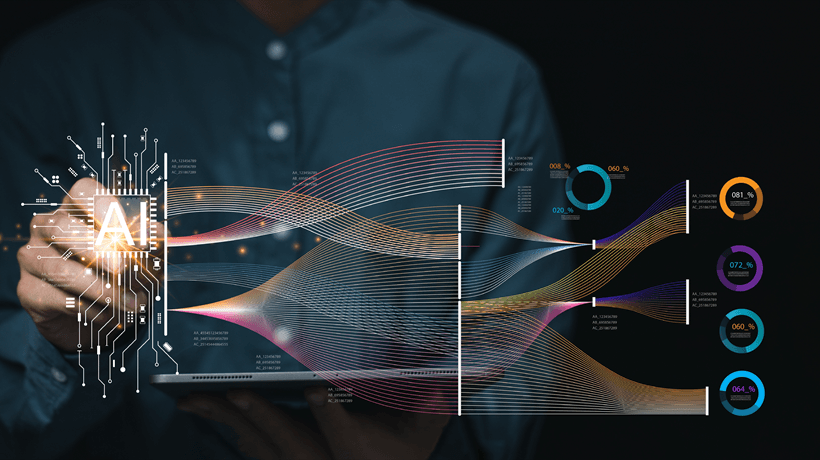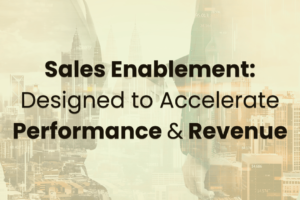
Predictive Analytics In L&D: Seeing ROI Before It Happens
The Power Of Prediction
What if you could predict which participants are most likely to apply their learning, which programs will deliver the strongest business results, and where to invest your limited resources for maximum return? Welcome to the world of predictive analytics in learning and development.
Predictive analytics transforms how we think about learning measurement by shifting focus from reactive reporting to proactive decision-making. Instead of waiting months or years to determine whether a program succeeded, predictive models can forecast outcomes based on historical patterns, participant characteristics, and program design elements.
Consider the difference between these two scenarios:
Traditional Approach: Launch a leadership development program, wait 12 months, then discover that only 40% of participants demonstrated measurable behavior change and business impact fell short of expectations.
Predictive Approach: Before launching, use historical data to identify that participants with specific characteristics (tenure, role level, previous training engagement) are 75% more likely to succeed. Adjust selection criteria and predict with 85% confidence that the program will deliver a 3.2x ROI within 18 months.
The predictive approach doesn’t just save time—it saves money, reduces risk, and dramatically improves outcomes.

eBook Release
The Missing Link: From Learning Metrics To Bottom-Line Results
Explore proven frameworks for connecting learning to business outcomes and examine real-world case studies of successful ROI measurement.
Predictive Analytics In L&D: Building Predictive Models With Historical Data
Your organization’s learning history is a goldmine of predictive insights. Every program you’ve run, every participant who’s engaged, and every business outcome you’ve tracked contributes to a pattern that can inform future decisions.
Start With Your Success Stories
Examine your most successful learning programs from the past three years. Look beyond the obvious metrics to identify subtle patterns:
- What characteristics did high-performing participants share?
- Which program design elements correlated with stronger outcomes?
- What external factors (market conditions, organizational changes) influenced results?
- How did timing affect program effectiveness?
Identify Early Indicators
The most powerful predictive models identify early signals that forecast long-term success. These might include:
- Engagement patterns in the first week of a program
- Quality of initial assignments or assessments
- Peer interaction levels in collaborative exercises
- Manager involvement and support indicators
- Pre-program readiness assessments
Research shows that 80% of a program’s ultimate success can be predicted within the first 20% of program delivery. The key is knowing which early indicators matter most for your specific context.
Case Study: Global Cosmetics Company Leadership Development
A global cosmetics company with 15,000 employees needed to scale their leadership development program while maintaining quality and impact. With limited resources and high expectations from the C-suite, they couldn’t afford to invest in programs that wouldn’t deliver measurable business results.
The Challenge
The company’s previous leadership programs had mixed results. While participants generally reported satisfaction and learning, business impact varied dramatically. Some cohorts delivered impressive results—increased team engagement, improved retention, higher sales performance—while others showed minimal impact despite similar investment.
The Predictive Solution
Working with MindSpring, the company developed a sophisticated predictive model using five years of historical program data, combining learning metrics with business outcomes.
The model analyzed:
- Participant demographics and career history
- Pre-program 360-degree feedback scores
- Current role performance metrics
- Team and organizational context factors
- Manager engagement and support levels
- Program design and delivery variables
Key Predictive Discoveries
The analysis revealed surprising insights:
High-impact participant profile: The most successful participants weren’t necessarily the highest performers before the program. Instead, they were mid-level managers with 3-7 years of experience, moderate (not excellent) current performance ratings, and managers who actively supported their development.
Timing matters: Programs launched during the company’s busy season (product launches) showed 40% lower impact than those delivered during slower periods, regardless of participant quality.
Cohort composition: Mixed-function cohorts (sales, marketing, operations) delivered 25% better business results than single-function groups, likely due to cross-pollination of ideas and broader network building.
Early warning signals: Participants who missed more than one session in the first month were 70% less likely to achieve meaningful business impact, regardless of their engagement in remaining sessions.
Results And Business Impact
Using these predictive insights, the company redesigned its selection process, program timing, and early intervention strategies:
- Participant selection: Applied predictive scoring to identify candidates with the highest success probability
- Timing optimization: Scheduled programs during predicted high-impact windows
- Early intervention: Implemented automated alerts and support for at-risk participants
- Resource allocation: Concentrated resources on cohorts with the highest predicted ROI
Predicted Vs. Actual Results
- The model predicted 3.2x ROI with 85% confidence
- Actual results delivered 3.4x ROI, exceeding predictions by 6%
- Business impact consistency improved by 60% across cohorts
- Program satisfaction scores increased by 15% due to better participant fit
Making Prediction Accessible
You don’t need a PhD in statistics or expensive software to begin using predictive analytics.
Start with these practical approaches:
Simple Correlation Analysis
Begin by examining correlations between participant characteristics and outcomes. Use basic spreadsheet functions to identify patterns:
- Which job roles show the strongest program impact?
- Do certain demographic factors predict success?
- How does prior training engagement correlate with new program results?
Progressive Complexity
Build your predictive capabilities gradually:
- Basic scoring: Create simple scoring systems based on identified success factors
- Weighted models: Apply different weights to various predictive factors based on their correlation strength
- Segmentation: Develop different prediction models for different participant segments or program types
- Advanced analytics: Gradually introduce machine learning tools as your data and expertise grow
Technology Tools For Prediction
Modern tools make predictive analytics increasingly accessible:
- Business intelligence platforms: Tools like Tableau or Power BI offer predictive features
- Learning analytics platforms: Specialized L&D analytics tools with built-in prediction capabilities
- Cloud-based ML services: Amazon AWS, Google Cloud, and Microsoft Azure offer user-friendly machine learning services
- Integrated LMS analytics: Many learning management systems now include predictive features
Beyond Individual Programs: Organizational Readiness Prediction
The most sophisticated predictive models look beyond individual programs to forecast organizational readiness for change and learning impact. These models consider:
Cultural Readiness Factors
- Leadership support and modeling
- Change management maturity
- Previous learning program adoption rates
- Employee engagement levels
Structural Readiness Indicators
- Organizational stability and recent changes
- Resource availability and competing priorities
- Communication effectiveness
- Performance management alignment
Market And External Factors
- Industry trends and competitive pressures
- Economic conditions and business performance
- Regulatory changes affecting skills needs
- Technology adoption patterns
By combining these organizational factors with program-specific predictions, L&D teams can make more strategic decisions about when, where, and how to invest in learning initiatives.
The Future Is Predictable
Predictive analytics represents a fundamental shift in how L&D operates—from reactive service provider to strategic business partner. When you can forecast the business impact of learning investments, you transform the conversation from cost justification to value creation.
The organizations that embrace predictive approaches today will build competitive advantages that compound over time. Each program delivers not just immediate results but also data that improves future predictions, creating a virtuous cycle of continuous improvement and increasing impact.
Your historical data contains the blueprint for future success. The question isn’t whether predictive analytics will transform L&D—it’s whether your organization will lead or follow in this transformation.
In our eBook, The Missing Link: From Learning Metrics To Bottom-Line Results, we explore how artificial intelligence and machine learning can automate and enhance these predictive capabilities, making sophisticated analysis accessible to every L&D team.
Source link




